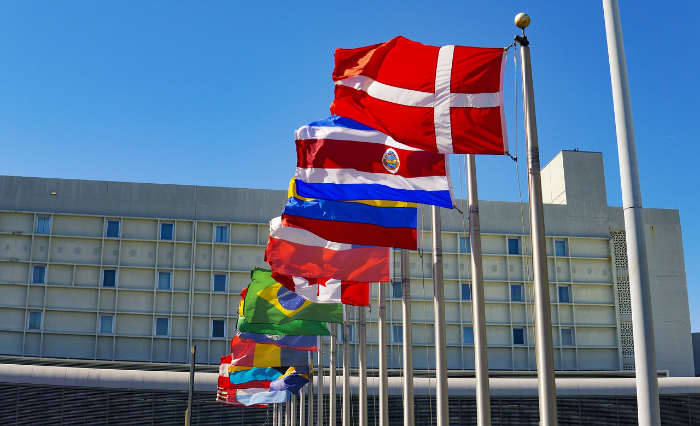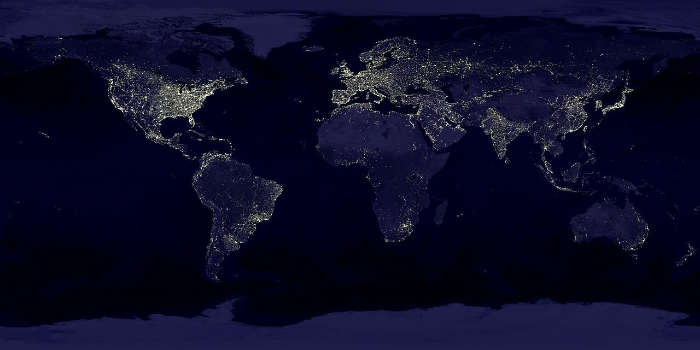Countries Where Abortion Is Illegal 2025

Yes
Varies by Jurisdiction
No
Abortion on Request Legal
Country | Abortion on Request Legal↑ | Legal If It Saves Woman's Life | Legal If Physical Health Threatened | Legal If Mental Health Threatened | |
|---|---|---|---|---|---|
| India | No | Yes | Yes | Yes | |
| Indonesia | No | Yes | No | No | |
| Pakistan | No | Yes | No | No | |
| Brazil | No | Yes | No | No | |
| Bangladesh | No | Yes | No | No | |
| Ethiopia | No | Yes | Yes | Yes | |
| Japan | No | Yes | Yes | No | |
| Egypt | No | Yes | No | No | |
| Philippines | No | No | No | No | |
| DR Congo | No | Yes | Yes | ||
| Iran | No | Yes | No | No | |
| Germany | No | Yes | Yes | Yes | |
| Italy | No | Yes | Yes | Yes | |
| Myanmar | No | Yes | No | No | |
| Colombia | No | Yes | Yes | Yes | |
| South Korea | No | No | No | No | |
| Sudan | No | Yes | No | No | |
| Algeria | No | Yes | No | No | |
| Iraq | No | No | No | No | |
| Afghanistan | No | Yes | No | No | |
| Yemen | No | Yes | No | No | |
| Angola | No | Yes | Yes | Yes | |
| Morocco | No | Yes | No | No | |
| Poland | No | Yes | No | Yes | |
| Malaysia | No | Yes | Yes | Yes | |
| Ghana | No | Yes | Yes | Yes | |
| Peru | No | Yes | Yes | Yes | |
| Saudi Arabia | No | Yes | No | No | |
| Madagascar | No | No | No | No | |
| Ivory Coast | No | Yes | Yes | Yes | |
| Cameroon | No | Yes | No | No | |
| Venezuela | No | Yes | No | No | |
| Niger | No | Yes | No | No | |
| Syria | No | Yes | No | No | |
| Mali | No | Yes | No | No | |
| Burkina Faso | No | Yes | No | No | |
| Sri Lanka | No | Yes | No | No | |
| Chad | No | Yes | Yes | Yes | |
| Chile | No | Yes | No | No | |
| Somalia | No | Yes | No | No | |
| Senegal | No | No | No | ||
| Guatemala | No | Yes | No | No | |
| Netherlands | No | Yes | No | No | |
| Ecuador | No | Yes | Yes | Yes | |
| Zimbabwe | No | Yes | Yes | No | |
| Guinea | No | Yes | No | No | |
| Benin | No | ||||
| Rwanda | No | Yes | Yes | Yes | |
| Burundi | No | Yes | No | No | |
| South Sudan | No | Yes | No | No | |
| Haiti | No | No | No | No | |
| Jordan | No | Yes | No | No | |
| Dominican Republic | No | No | No | No | |
| United Arab Emirates | No | Yes | No | No | |
| Honduras | No | No | No | ||
| Togo | No | Yes | No | No | |
| Hungary | No | Yes | No | No | |
| Israel | No | Yes | Yes | Yes | |
| Austria | No | Yes | Yes | Yes | |
| Switzerland | No | No | No | No | |
| Libya | No | Yes | No | No | |
| Paraguay | No | Yes | No | No | |
| Nicaragua | No | No | No | No | |
| Republic of the Congo | No | No | No | No | |
| El Salvador | No | No | No | No | |
| Central African Republic | No | Yes | Yes | Yes | |
| Oman | No | No | No | ||
| Mauritania | No | Yes | No | No | |
| Costa Rica | No | Yes | No | No | |
| Panama | No | Yes | No | No | |
| Eritrea | No | No | Yes | Yes | |
| Qatar | No | Yes | No | No | |
| Namibia | No | Yes | Yes | Yes | |
| Gabon | No | Yes | No | No | |
| Lesotho | No | No | No | No | |
| Equatorial Guinea | No | Yes | No | No | |
| Bahrain | No | Yes | No | No | |
| Timor-Leste | No | Yes | Yes | Yes | |
| Mauritius | No | Yes | Yes | Yes | |
| Eswatini | No | Yes | Yes | Yes | |
| Djibouti | No | No | No | No | |
| Comoros | No | Yes | No | No | |
| Bhutan | No | Yes | No | No | |
| Suriname | No | No | No | No | |
| Malta | No | Yes | No | No | |
| Maldives | No | Yes | No | No | |
| Brunei | No | Yes | No | No | |
| Samoa | No | Yes | Yes | Yes | |
| Andorra | No | No | No | No | |
| Liechtenstein | No | Yes | No | No | |
| Monaco | No | Yes | Yes | No | |
| Palau | No | No | No | No | |
| Vatican City | No | No | No | No | |
| United States | Varies by Jurisdiction | Varies by Jurisdiction | Varies by Jurisdiction | Varies by Jurisdiction | |
| Nigeria | Varies by Jurisdiction | Varies by Jurisdiction | Varies by Jurisdiction | Varies by Jurisdiction | |
| Mexico | Varies by Jurisdiction | Varies by Jurisdiction | Varies by Jurisdiction | Varies by Jurisdiction | |
| Australia | Varies by Jurisdiction | Varies by Jurisdiction | Varies by Jurisdiction | Varies by Jurisdiction | |
| Bosnia and Herzegovina | Varies by Jurisdiction | Varies by Jurisdiction | Varies by Jurisdiction | Varies by Jurisdiction | |
| China | Yes | Yes | Yes | ||
| Russia | Yes | ||||
| Vietnam | Yes | ||||
| Turkey | Yes | Yes | No | No | |
| Thailand | Yes | No | Yes | Yes | |
| France | Yes | ||||
| South Africa | Yes | Yes | Yes | Yes | |
| Spain | Yes | Yes | Yes | Yes | |
| Argentina | Yes | Yes | Yes | Yes | |
| Canada | Yes | ||||
| Ukraine | Yes | Yes | |||
| Uzbekistan | Yes | ||||
| Mozambique | Yes | Yes | Yes | Yes | |
| Nepal | Yes | Yes | Yes | Yes | |
| Kazakhstan | Yes | Yes | |||
| Romania | Yes | Yes | |||
| Cambodia | Yes | Yes | |||
| Tunisia | Yes | No | No | ||
| Belgium | Yes | No | No | No | |
| Cuba | Yes | Yes | |||
| Sweden | Yes | Yes | |||
| Czechia | Yes | Yes | |||
| Portugal | Yes | Yes | Yes | Yes | |
| Azerbaijan | Yes | ||||
| Greece | Yes | Yes | Yes | Yes | |
| Belarus | Yes | Yes | |||
| Turkmenistan | Yes | ||||
| Bulgaria | Yes | Yes | |||
| Serbia | Yes | Yes | No | No | |
| Denmark | Yes | Yes | Yes | Yes | |
| Singapore | Yes | Yes | Yes | Yes | |
| Finland | Yes | Yes | |||
| Norway | Yes | Yes | Yes | Yes | |
| Slovakia | Yes | Yes | No | No | |
| Ireland | Yes | Yes | Yes | Yes | |
| New Zealand | Yes | ||||
| Croatia | Yes | Yes | |||
| Georgia | Yes | Yes | |||
| Mongolia | Yes | Yes | Yes | ||
| Uruguay | Yes | Yes | Yes | Yes | |
| Moldova | Yes | Yes | |||
| Armenia | Yes | Yes | |||
| Lithuania | Yes | Yes | |||
| Albania | Yes | Yes | No | No | |
| Slovenia | Yes | Yes | |||
| Latvia | Yes | ||||
| North Macedonia | Yes | Yes | No | No | |
| Estonia | Yes | ||||
| Guyana | Yes | Yes | Yes | Yes | |
| Luxembourg | Yes | Yes | No | No | |
| Montenegro | Yes | Yes | |||
| Cape Verde | Yes | Yes | Yes | Yes | |
| Iceland | Yes | Yes | |||
| Sao Tome and Principe | Yes | Yes | Yes | Yes | |
| Isle of Man | Yes | Yes | No | No | |
| San Marino | Yes | Yes | Yes | Yes | |
| Tanzania | Yes | ||||
| United Kingdom | Yes | Yes | Yes | ||
| Kenya | Yes | Yes | Yes | ||
| Uganda | Yes | ||||
| Malawi | Yes | ||||
| Zambia | Yes | Yes | Yes | ||
| Bolivia | Yes | Yes | Yes | ||
| Hong Kong | Yes | Yes | Yes | ||
| Lebanon | Yes | ||||
| Liberia | Yes | Yes | |||
| Gambia | Yes | ||||
| Botswana | Yes | Yes | Yes | ||
| Trinidad and Tobago | Yes | Yes | Yes | ||
| Cyprus | Yes | Yes | Yes | ||
| Fiji | Yes | Yes | Yes | ||
| Solomon Islands | Yes | ||||
| Belize | Yes | Yes | Yes | ||
| Barbados | Yes | Yes | Yes | ||
| Saint Lucia | Yes | Yes | Yes | ||
| Kiribati | Yes | ||||
| Seychelles | Yes | Yes | Yes | ||
| Jersey | Yes | Yes | Yes | ||
| Saint Vincent and the Grenadines | Yes | Yes | Yes | ||
| Guernsey | Yes | Yes | Yes | ||
| Cook Islands | Yes | ||||
| Nauru | Yes | ||||
| Tuvalu | Yes |
- Data indicate the legality of abortion under various conditions in various countries
- In many countries, abortion is broadly illegal but legal in cases that meet certain qualified exceptions, including:
- If the pregnancy endangers the woman’s life, physical health, or mental health
- If the pregnant woman has a cognitive disability
- If the pregnancy is the result of rape or incestuous sexual activity
- In the case of severe fetal impairment
- If prohibitive economic or social factors exist
Snapshot
-
Most countries where abortion is legal impose a gestational limit, typically around 12 weeks, with exceptions for rape, incest, and significant fetal impairments.
-
In 37 countries, abortion is permitted solely to save the mother's life, highlighting the prioritization of maternal health in certain legal frameworks, with exceptions like ectopic pregnancies.
-
Economic considerations influence abortion laws in some regions, allowing for termination due to financial hardship.
Abortion, the process of prematurely terminating a pregnancy through surgical means, has always been a controversial subject. Abortion is a deeply personal matter, and our opinions on it are formed by our most fundamental moral, emotional, religious, political, and ethical beliefs. Abortion involves both the potential mother’s right to bodily autonomy (and health) and the unborn child’s right to life—two inalienable rights that abortion sets against one another. Because of these factors and more, abortion laws vary significantly between nations, as well as between various U.S. states.
The Undeniable (though understandable) Complexity of Abortion Laws
Laws regarding abortion are diverse. As of 2021, there are twenty-four countries in which abortion is illegal in any and all circumstances. However, most countries have adopted a more nuanced approach. Nearly every country in which abortion is legal has what is known as a gestational limit, which means a fetus or embryo can be aborted early in the pregnancy, but cannot be aborted once it reaches a certain stage of development. This is typically 12 weeks, but may be as low as 6 weeks or as high as 24 weeks. Abortion may also be legal in cases in which the pregnancy is the result of rape, incest, or if the fetus has a noticeable developmental impairment. In some countries (particularly in Asia, where male children tend to be valued more than female children) gender-based abortion is legal.
The mother’s health factors into the equation as well. In 37 countries, abortion is illegal unless it saves the mother’s life. In other countries, it is illegal unless used to save the mother’s life or preserve her health during pregnancy. An example of this situation is an ectopic pregnancy, in which the embryo fails to implant in the uterus and instead implants in a different organ (fallopian tubes, ovaries) or just outside the uterus. Ectopic pregnancies cannot be carried to term—the embryo cannot survive outside the uterus—and have a high probability of causing fatal injuries to the mother as well if not aborted.
Finances are another important variable. Some countries’ abortion laws allow abortion if carrying the pregnancy to term would inflict unreasonable socioeconomic hardship on the mother. Studies have shown that women denied access to abortion are markedly more likely to descend into poverty as a result of the added financial burden of caring for an additional child.
Finally, there are countless additional guidelines to many countries’ abortion laws, such as requiring parental/spousal consent (or a police report in cases of rape), restricting access to methods of determining the sex of the fetus, or requiring the pregnant woman to first view an ultrasound or listen for a fetal heartbeat.
Countries in which Abortion is Completely Illegal/Prohibited*
*Note: The list above includes only countries in which abortion has been completely prohibited. For a more complete and detailed list of countries and their various legal stances on abortion, see the table further down the page.
The Real-world Impact of Making Abortion Illegal
According to data from the World Health Organization (WHO), the legality of abortion across the world actually has little to no effect on abortion rates throughout the world. Legal or not, abortions can, will, and do take place. The legality of abortion, however, does affect how safe those abortions are for the mother. Women who do not have access to a legal abortion frequently turn to illegal or “homemade” abortion options, which are typically much riskier, more dangerous, and less effective than legal options conducted by professional doctors in a clinical setting would be.
Abortion Laws of Major Countries Compared
United States
Abortion laws in the United States are in flux as of 2022. Abortion was made legal across the entire the United States by the Supreme Court’s landmark Roe v. Wade decision in 1973. While each state still had its own set of legal guidelines for abortion, with some being far more restrictive than others, abortion was nonetheless legal in every part of the country. However, Roe v. Wade was overturned by the then-current Supreme Court on June 24, 2022, in a case titled Dobbs v. Jackson Women’s Health Organization. This decision enabled each individual state to legalize or prohibit abortion. As a result, state abortion laws vary more widely than ever.
Prior to Roe v. Wade, 30 states had banned abortion outright. Although Roe v. Wade forced these states to legalize abortion, many still enacted laws limiting abortion as much as legally allowed. The expectation was that such states would quickly move to prohibit abortion again. This proved to be the case, with more than 20 states, particularly red states in the central and southern U.S., re-banning abortion within a week of the Dobbs decision.
Some of these bans were the result of pre-existing abortion bans that had been rendered inactive by Roe v. Wade but never removed from the state’s legal code, so they became active again upon RvW’s dissolution. Additionally, beginning with South Dakota in 2005, thirteen states had passed proactive “trigger laws”—anti-abortion laws that were specifically designed to go into effect in the event that Roe v. Wade was ever repealed.
There is some indication that new abortion bans will be more restrictive and punitive than those from the pre-RvW era. For example, a 2021 Texas law (S.B. 8) empowered individual citizens to sue anyone they discovered had performed or aided an abortion, even if they had never met any of the parties involved. This regulation had not appeared in Texas’ pre-RvW abortion laws.
Brazil
Latin America’s largest country has not completely outlawed abortion, but it does consider abortion a crime in all but a few select circumstances: When the pregnant woman was raped, when the pregnancy is the result of incest/sexual activity with a family member, or when the woman’s life would be endangered by continuing the pregnancy. These three exceptions are quite common globally and are found in many countries’ abortion laws.
Canada
Abortions are legal in Canada and require no legally compelling reason (such as rape or health risks) so long as they take place before the gestational limit, which ranges from 12 weeks to “24 weeks + 6 days” depending upon province and territory. Abortions were banned in most cases until the year 1988, when the Canadian Supreme Court reversed the laws that once made abortions illegal. Abortions fall under the services covered by Canada’s national health care system. Provided the abortion is conducted in a regular hospital, the patient is not charged. Abortions performed in private clinics may require the patient to pay medical costs.
Russia
Abortion is fully legal up to the 12th week of pregnancy in Russia, as well as up to 22 weeks in cases of rape and at any point if the pregnancy threatens the life of the mother. Russia actually made abortion legal for any reason in 1920, making it the first country to do so. Although a broad ban was reinstated in 1936, that ban was lifted in 1955 and abortion access has remained open ever since. As of 2010, Russia led the world in the number of abortions per capita.
Highlighted Abortion Laws
- On Request — Abortion for any reason is legal, though gestational limits still apply.
- Save Life — Abortion is legal when necessary to save the life of the woman.
- Physical Health — Abortion is legal when pregnancy risks significant (but non-fatal) injury to the woman.
- Mental Health — Abortion is legal when pregnancy puts the woman’s mental/emotional health at risk.
- Rape — Abortion is legal when the pregnancy is the result of rape.
- Incest — Abortion is legal when the pregnancy is the result of incest.
- Cognitively Disabled — Abortion is legal when the woman is mentally or cognitively disabled.
- Fetal Impairment — Abortion is legal when the fetus is known to have significant mental disabilities or physical malformations. As these can range from non-life-threatening conditions such as Down Syndrome to 100% fatal conditions such as anencephaly, more granular guidelines are often necessary.
- Socioeconomic — Abortion is legal when the woman is financially unable to support the child.
Sources
- Global Abortion Policies Database - World Health Organization
- World Abortion Laws - Center for Reproductive Rights
- World Abortion Policies (2013) - United Nations
- Abortion Laws - Wiki
- Abortion Laws: Global Comparisons - Council of Foreign Relations
- State Bans on Abortion Throughout Pregnancy - Guttmacher Institute
- These States Will Ban Abortion Now That Roe Is Overturned - Huffpost



















